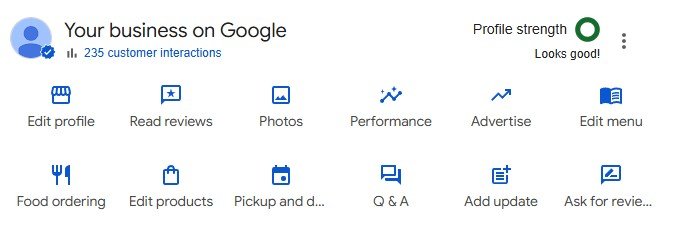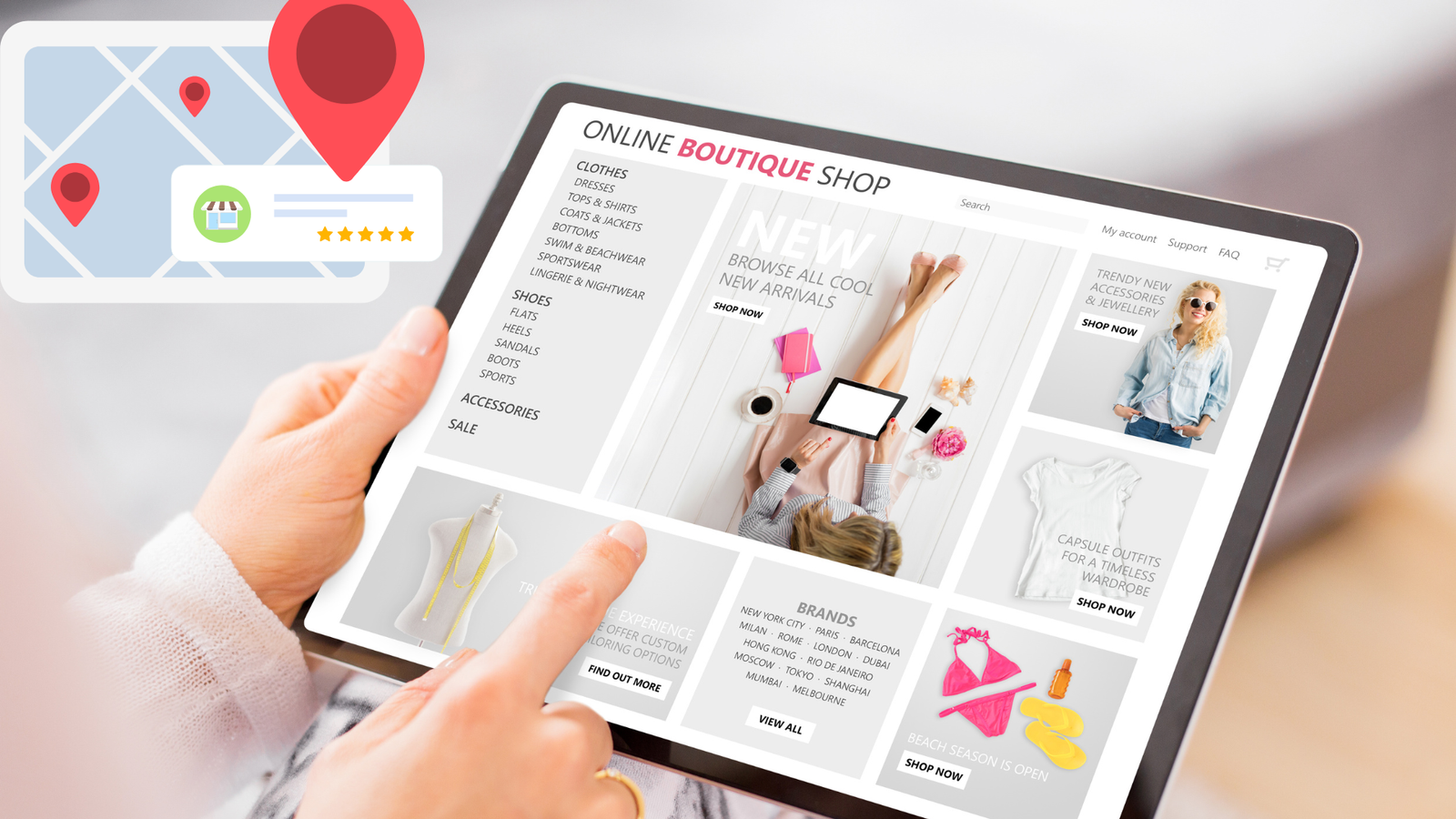Your Boutique Business is Struggling Because of Weak Local SEO
Big brands and online giants are taking over local searches. If your boutique isn’t showing up where customers search, they’ll buy from someone else.
Google’s AI-driven search is changing how people discover local businesses. AI overviews, personalized results, and voice searches now influence what customers see first. Foot traffic and sales will drop if your boutique isn’t optimized for these changes.
This guide gives you five powerful Local SEO strategies that will help you improve your boutique sales online. You’ll learn how to rank higher, attract more local shoppers, and turn online searches into in-store sales.
Let’s get in.
- Optimize Your Boutique’s Google Business Profile (GBP) for AI Search
Google now prioritizes businesses that keep their profiles detailed, updated, and interactive. If your boutique’s GBP is inactive or incomplete, you’re losing visibility to AI-driven search results.

How to Make Your GBP AI-Friendly
- Use Hyper-Local Keywords
Generic location-based terms won’t help you stand out. Instead, focus on specific products or services tied to your area. Think about how a customer would search for what you sell, including materials, styles, or niche categories.
For instance;
“Handmade leather handbags in Brooklyn.”
- Add Relevant Q&A to Google Business
Don’t wait for customers to ask questions. Add and answer frequently asked questions to highlight key details about your boutique. This helps Google understand your business and improves search visibility. Cover topics like product availability, services, and in-store policies.

For instance;
“Do you stock exclusive designer collections?”
- Post Weekly Google Updates
Keep your profile fresh with weekly updates. Share new arrivals, promotions, customer reviews, or upcoming events. Google loves active businesses, and consistent updates signal relevance.

For instance, post about;
- Customer testimonials
- Limited-time discounts
- In-store events
- Enable Google Messaging
Turn on Google Messaging so customers can contact you directly from search results. Quick responses improve engagement and can boost your ranking.
- Use GBP Products & Services
Upload individual products and services with descriptions. Google’s AI scans structured listings, increasing the chances of your boutique appearing in relevant searches.
- Use Boutique-Specific Schema Markup to Improve Search Visibility
Schema markup helps search engines understand your boutique better. It structures your data so Google can feature it in AI-generated search results, rich snippets, and local packs. It makes your store more visible to local shoppers.
Essential Schema Markup for Boutique Owners
- Product Schema
Tell search engines what products you sell and whether they are available locally. Adding local stock availability helps customers find in-store options instead of buying online. Example:
“Available in-store at [Your Boutique Name], [City].”
- Local Business Schema
Highlight details that make your boutique unique.
This can include:
- Business type (e.g., boutique, retail store, designer showroom)
- Special features (woman-owned, eco-friendly, custom tailoring)
- Accepted payment methods
- Store hours and contact details
- Event Schema
Use Event Schema to host events like pop-up shops, styling sessions, or trunk shows. This increases your chances of appearing in Google’s AI-generated results for local events. Include event details, dates, and locations for better visibility.
- Build Authority With AI-Preferred Local Content & Boutique-Specific Reviews
Google AI now pulls insights from local content and customer-generated reviews to rank businesses. If your content is strong, AI generative engines and AIOs will pick your content for specific inquiries. It will build trust with local shoppers.
Content Strategies That Boost Local SEO
- Create Localized Buying Guides
Write blog posts that highlight your boutique’s unique offerings within the local shopping scene. Focus on specific styles, materials, or fashion trends your store specializes in.
For Example:
You can create a guide on the best places to find handmade jewelry in your city, featuring your boutique as a key destination.
- Feature In-Store Experience Content
Give potential customers a look inside your boutique. Create BTS (Behind the Scenes) content about how you curate collections, select fabrics, or offer styling tips. This content keeps your website fresh and shows Google that your boutique is an authority in its niche.
- Ask Your Customer to Give You Reviews
Google AI favors detailed, keyword-rich reviews that describe products, shopping experience, and store atmosphere. Ask customers to mention what they bought, why they loved it, and how your boutique stands out.

- Use User-Generated Content (UGC)
Embed customer testimonials, OOTD (Outfit of the Day) posts, and boutique haul videos on your website. UGC builds credibility and gives Google more local content to feature in AI-powered search results.
- Get Local Backlinks & AI-recognized Citations for Better Rankings
Google just crazily loves trusted local backlinks and consistent citations. These signals prove your boutique is a reliable part of the local shopping scene.
How to Get Boutique-Specific Local Backlinks
- Partner With Local Bloggers & Influencers
Collaborate with local fashion bloggers, Instagram influencers, or shopping guides. Being featured in city shopping blogs or social media reels improves your boutique’s credibility and online presence.
- List Your Boutique on Local Shopping Directories
Get listed on platforms focused on local businesses and fashion.
Examples include:
- City-based shopping directories
- Fashion hubs like The Boutique Hub
- Yelp’s ‘Top Local Boutiques’ lists
- Earn Backlinks From Local Business Networks
Get mentioned in your city’s Chamber of Commerce website, local news features, and “Best Boutique in [City]” roundups. These backlinks improve your boutique’s authority in AI-driven search results.
- Make Sure that AI-Indexed Citations Are Accurate
Google AI cross-checks your boutique’s Name, Address, and Phone Number (NAP) across directories. Keep details consistent on Google Business Profile, Yelp, social media pages, and other listing sites.
- Turn Social Media Engagement Into Local Search Visibility
Google’s AI factors in social signals when ranking boutique businesses. Engaging local audiences on social platforms can boost your boutique’s visibility in AI-driven local searches.
SEO-Driven Social Media Strategies for Boutiques
- Optimize Instagram & TikTok for Local Search
Use geo-tagged posts, reels, and stories to help AI understand your boutique’s location. Add hyper-local hashtags like #PortlandVintage or #NYCBoutique to attract nearby shoppers.
- Create Pinterest Boards That Rank in Google
Pinterest boards get indexed by Google. Create a local fashion guide board titled “Best Boutiques in [City],” featuring your products, trends, and shopping tips.
- Post AI-Friendly Video Content
Google AI prioritizes short-form videos. Share quick clips of in-store styling tips, limited-time collections, or local shopping experiences to boost engagement and search visibility.
- Use Facebook & Nextdoor for Local Business Discovery
List your boutique in Facebook Local Business and Nextdoor’s business section. Post weekly updates, promote events, and engage in community groups to increase local visibility.
Local SEO Is About Visibility, Not Just Rankings
Search engines analyze engagement, structure data, and track authority signals. If your boutique isn’t adapting, you’ll lose opportunities and won’t appear to your targeted buyers.
Take control of your local presence. Update your listings, optimize content for AI, and build authority; Google will love to send more visitors.
If you think it’s too much to keep up with…we can help you.

